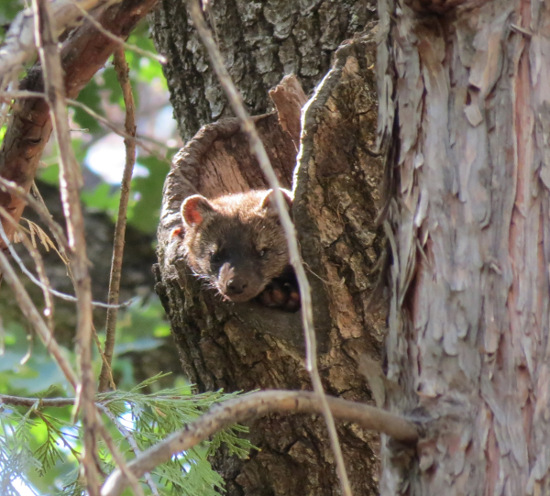We used Maxent distribution models and MC1 to investigate effects of climate and vegetation on the distribution of martens (Martes caurina) and fishers (Pekania pennanti) in the Sierra Nevada, California, under current and projected future conditions. Both species are forest carnivores of conservation concern in California, where they reach their southernmost distributions. The species occupy similar ecological niches and may compete in the elevation band where their ranges overlap—but martens mostly occupy higher elevations with deep, persistent snow, and fishers occupy lower elevations with less snow. We systematically varied types of environmental variables (climate, vegetation, terrain, presence or absence of the other species) included in Maxent models and compared area‐under‐curve (AUC) values to determine what variables best predict current distributions. Terrain variables and presence or absence of the competing species did not add significantly to model fit. For fishers, models using both climate and vegetation variables outperformed those using only vegetation; for martens, there was no significant difference between vegetationonly, climate‐only, and vegetation + climate models. We then prepared climate + vegetation Maxent models using MC1‐derived variables that best approximated the variables used in the best current (benchmark) models, compared predicted distributions with benchmark models, and projected distributions to mid‐ and late 21st century using MC1 vegetation projections and an array of downscaled general circulation models (GCMs) and emission scenarios at three resolutions (10 km, 4 km, 800 m). The finest available GCM resolution (800 m) provided the best spatial congruence between MC1‐derived models and benchmark models. Regardless of GCM emission scenario, predicted marten distribution shifted to higher elevations, became more fragmented, and decreased in area by 40−85% (depending on scenario) compared to current distributions. Predicted changes in fisher distribution were more variable across GCM scenarios, with some increases and some decreases in extent and no consistent elevation shifts—suggesting high uncertainty in climate change effects on fishers. Management to benefit these species should consider ways of sustaining appropriate vegetation conditions within their preferred climate envelopes via adaptive management.
Simulating Effects of Climate and Vegetation Change on Distributions of Martens and Fishers in the Sierra Nevada, California, Using Maxent and MC1





